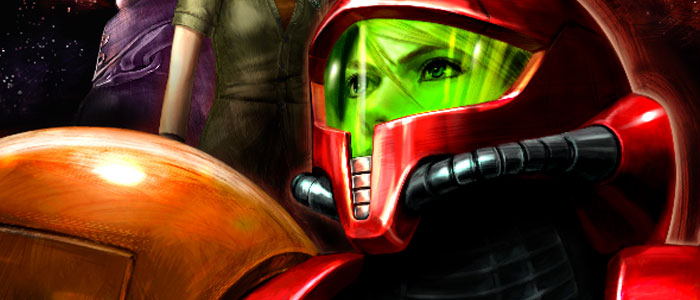It truly has been a long ride. The Metroid series is definitely one of Nintendo’s most prominent series among the core gaming crowd. Super Metroid is still considered one of the best games of all time in many circles. Still when Nintendo announced that the developers behind the bouncy Dead or Alive series were taking the reins on the latest rendition in the series; plenty were worried. Metroid: Other M however, doesn’t disappoint as it manages to bring the series back to its roots while giving players a nice background story on everyone’s favorite female bounty hunter.
The opening sequence in the game is a fantastic CGI retelling of the end of Super Metroid. Watching Mother Brain bear down on Samus as the baby Metroid sacrifices itself to save her is truly tear-jerking for hardcore fans. It isn’t often that we get such fan service. From here the game dives deep into the world of Samus Aran in what is easily the most story-driven entry in the series. It may feel weird for Metroid fans to see a game focused around so much narrative. All of the characters are voiced, and we get some truly gorgeous CGI cut scenes that tell the story of Nintendo’s perennial bounty hunter.
I have to admit that the first time Samus spoke it felt weird. For so long she has been more of a silent badass. The writing in the game can be a bit derivative at times, but it does a nice job of really getting the story across. The voice acting ranges from decent to downright annoying. The main story focuses on a distress call from a space station called Bottle Ship. Samus of course heads off to help out. Once she arrives she runs into an old friend as well as a group of Galactic Federation soldiers and thus begins the flashbacks to the past.
Learning about one of the most iconic characters in gaming history is very cool. Team Ninja did an amazing job of conveying character emotion with the cut scenes. For Metroid fans this is one piece of fan service you simply cannot miss.
For anyone fearing that their beloved Samus would be trotting around in a swimsuit and jiggling all over the screen can put those worries to rest. Team Ninja has instead created a hybrid of sorts that brings back the 2D action of the original games, while still mixing in the first-person combat found in Retro Studios’ more recent Prime trilogy. Amazingly the entire game is played with just the standard Wii remote, and even without a Motion Plus attachment to boot. This is classic Metroid gameplay at its finest.
Controlling Samus in 2D is simple. Move her along with the d-pad, use the 1 and 2 buttons to jump and shoot, and tap the A button to morph into ball form. The motion part involves you pointing the Wii remote at the screen which then takes Samus into first-person mode. First-person mode is great for exploring the environments, and imperative to discovering all the hidden items in the game, but it is also clumsier than it needs to be. The most obvious hindrance is that you cannot move while in first-person. Instead you are confined to the area where you pointed the remote at the screen. This can lead to moving and adjusting, as well as dying during boss fights that require it when you aren’t pinpoint accurate.
Anyone who has played Metroid before knows about the progressive system in the game. Somehow Samus always manages to lose all her abilities at the start of the game, and over time you regain them and more areas open up. This is one of the most addicting and signature features for the series. Other M handles it a bit differently. Samus never actually loses her powers, but instead decides not to use them out of respect to her former commander Adam Malkovich. While clever the idea actually doesn’t make any sense in context. Why would Samus purposely put herself in harm’s way just to appease her former commander?
Even with these setbacks Other M is a hugely rewarding experience. The classic formula mixed with unique Wii-specific controls combines to create a fantastic experience for Metroid fans both new and old. The fact that we finally learn some back story on Samus is incredibly exciting, and finally going back to the 2D plane really does the game justice.
On a purely visual level Other M is simply gorgeous. The cut scenes are extremely well done, and their transition into actual gameplay is seamless. I really found myself impressed that I was actually playing a Wii game at times as the visuals were truly remarkable in some areas. Of course going into first-person sometimes exposes the weaker textures, but as a whole the game looks fantastic on an HD setup. The music and sound effects are classic Metroid mixed with some modern flavor. It is hard not to get excited when you hear the main theme mixed into game. Also as I mentioned earlier the voice acting is passable, but there are some truly annoying characters in the game, and the writing is truly derivative at times.
Metroid: Other M is easily one of Nintendo’s finest additions to the Wii library. Team Ninja has done an outstanding job of capturing the feel of the series, while adding their own flavor to the mix. Finally getting to hear Samus was an experience in and of itself. Learning the back story, even if it is a bit wordy and unoriginal, was more than worth the price of admission for this Metroid fan. If you are even the slightest fan of the series this is a no-brainer. Other M is a fantastic palette for a brand new era in the franchise.
Review copy provided by publisher.
